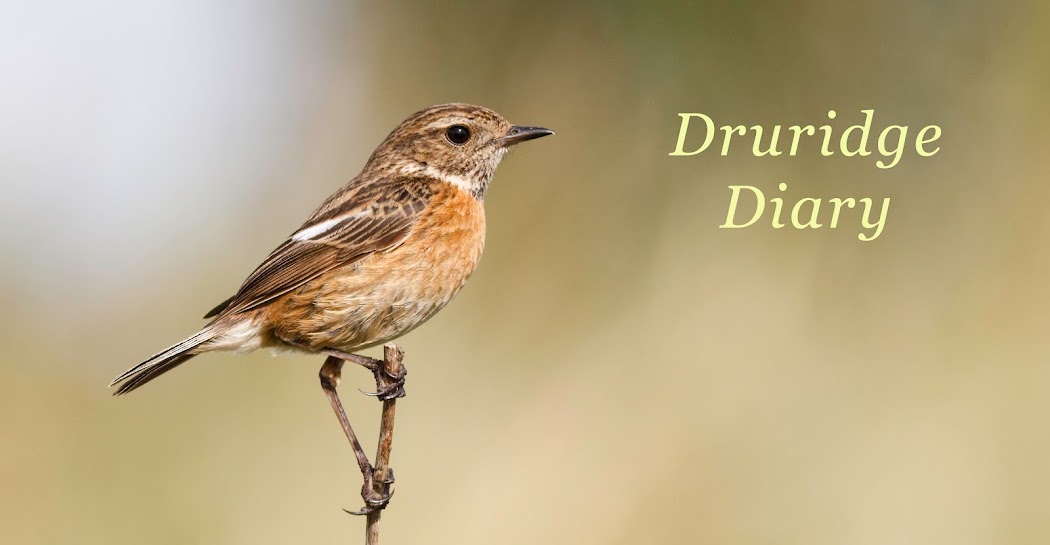But no, I thought, it's your last chance, get yersel out. I decided on grand tour of the patch, starting at the bushes then down to the Oddie hide and a good chinwag with Ian Douglas. Then I headed inland, for the Preceptory. I sneaked in, walking over some fresh barn owl pellets and caught a little owl sneaking out from one of the chimney stacks, it flew out to perch on the fence. A very unexpected year-tick.
Ian Douglas and I had just been discussing how poor an owl year it was.
My route then took me down to the farm, where there was a decent flock of chaffinches but nothing else among them and back towards the cottages.
A final quick scan of the Budge fields revealed nothing new and the rain had started to lash down, so I headed for home without my usual look at the sea.
So the year ended on a bit of a highlight with my 171st species for the patch for the year, the best year I've had for at least the last six. I can't put my finger on why the year has been so good. I eventually got most of the common waders, despite passage being slack, there was no real 'falls' of the autumn so I missed stuff like redstart. Seawatching was canny at times so that would have helped, but we caught and ringed less birds than any previous year.. All in all though, an above average year.
So the highlights...
The greatest highlight was catching and ringing a breeding pair of marsh warblers and then seeing fledged young later. We had to keep this to ourselves at the time for obvious reasons. If accepted, this will be the first confirmed breeding record for the County.
 |
| Marsh warbler (male) |
The first was nightjar back in May, which you can read about here. Nighjtar was a species I hadn't even considered might occur at Druridge.
The second species to be added was Jay. Long awaited and I didn't even find it myself, but thanks to Roger and Dave.
The final species was belter, not found by me, but by Martin Kitching. Subalpine warbler, later confirmed as being of the 'eastern' race and hopefully split very soon.
I've really enjoyed my year on the patch again. I'll not be starting over again tomorrow as I am off to West Bromwich Albion. Maybe on the 2nd....
Thanks for reading over the last year and all the best for 2014!
171 Little Owl




























































